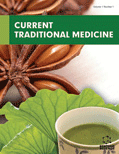
Abstract
Background: A wide variety of Garcinia species have been used over decades, as traditional home remedies starting from their use in flavored food to the treatment of various ailments. The presence of the essential primary and secondary metabolite with curative properties in Garcinia has enhanced its value in the therapeutic world. These have captivated the use of Garcinia in expanding nutritional values and adding extra health benefits. Hereby, observing the potential of different Garcinia species for their use as nutraceuticals.
Objective: The present-day lifestyle and current health trends are the reasons why the public has accumulated a lot of interest in the nutraceutical food market. Traditionally the various remedies used from plants, fruits, and fruit extracts used in the cure of multiple ailments since antiquity have now made their way into pharmaceutical nutraceuticals. The fruits of Garcinia species have many culinary, nutritional, and pharmaceutical uses. Therefore, the paper aims to focus on the different Garcinia species having nutritional potential along with various therapeutic properties.
Methods: Studies of different Garcinia species are reviewed, with a focus on their nutritional and medicinal actions on ailments that are the reason for today's lifestyles and current health trends.
Results: Different varieties of Garcinia species are found to have various potential primary and secondary metabolites which have curative properties like anti-diabetic, anti-obesity, anti-microbial, anti-cancer, anti-inflammation, and anti-bacterial potential.
Conclusion: The natural occurrences of the plant product with nutraceutical value have boosted the quality of life. The Garcinia species containing the essential primary and secondary constituents are accountable for numerous biological activities. Many of the Garcinia species are marketed these days for a better and healthy life. Thus, Garcinia could be used as a nutraceutical to alleviate several disease conditions.
Keywords: Nutraceuticals, Garcinia species, health benefit, medicinal fruits, primary metabolites, secondary metabolites.
[http://dx.doi.org/10.1007/s13197-011-0269-4] [PMID: 23572839]
[http://dx.doi.org/10.1007/978-981-13-1745-3_11-1]
[http://dx.doi.org/10.4103/2231-4040.107494] [PMID: 23662276]
[http://dx.doi.org/10.2174/1872211313666190503112040] [PMID: 31577201]
[PMID: 25709784]
[http://dx.doi.org/10.2139/ssrn.916572]
[http://dx.doi.org/10.1039/C4FO00477A] [PMID: 25407943]
[http://dx.doi.org/10.1155/2014/823705]
[http://dx.doi.org/10.1002/ptr.2730] [PMID: 19172667]
[http://dx.doi.org/10.1016/j.biopha.2018.07.087] [PMID: 30119210]
[http://dx.doi.org/10.3390/molecules25143201] [PMID: 32674257]
[http://dx.doi.org/10.3390/nu13020510] [PMID: 33557185]
[http://dx.doi.org/10.3390/molecules22050683] [PMID: 28441346]
[http://dx.doi.org/10.1016/j.fct.2017.08.021] [PMID: 28842267]
[http://dx.doi.org/10.3390/ph15010084] [PMID: 35056141]
[http://dx.doi.org/10.1016/j.fbio.2022.102110]
[http://dx.doi.org/10.1007/s10722-018-0695-5]
[http://dx.doi.org/10.2174/1389201021666200130113441] [PMID: 32000642]
[http://dx.doi.org/10.3390/plants11192521] [PMID: 36235385]
[http://dx.doi.org/10.2174/157340721001140725001152]
[http://dx.doi.org/10.1093/ajcn/30.5.767] [PMID: 324261]
[http://dx.doi.org/10.2174/1874120701509010326] [PMID: 26998183]
[http://dx.doi.org/10.1177/1091581814526891] [PMID: 24861367]
[http://dx.doi.org/10.3390/molecules25194513] [PMID: 33019745]
[http://dx.doi.org/10.3389/fpls.2022.809497] [PMID: 35463410]
[http://dx.doi.org/10.1016/S0031-9422(00)00303-4] [PMID: 11190384]
[http://dx.doi.org/10.2174/092986705774370727] [PMID: 16250874]
[http://dx.doi.org/10.2174/092986705774370691] [PMID: 16250875]
[http://dx.doi.org/10.2174/092986705774370682] [PMID: 16250871]
[http://dx.doi.org/10.2174/092986709788682056] [PMID: 19601799]
[http://dx.doi.org/10.2174/187152106774755563]
[http://dx.doi.org/10.1111/j.1527-3466.2004.tb00133.x] [PMID: 15179447]
[http://dx.doi.org/10.2174/1385272801666220126162734]
[http://dx.doi.org/10.1016/j.bmc.2006.04.014] [PMID: 16651002]
[http://dx.doi.org/10.1016/j.ejmech.2016.03.058] [PMID: 27111599]
[http://dx.doi.org/10.1039/C4NP00027G] [PMID: 24972079]
[http://dx.doi.org/10.1007/s11101-014-9387-8]
[http://dx.doi.org/10.1016/j.phytol.2020.07.007]
[http://dx.doi.org/10.1080/14786419.2020.1825427] [PMID: 32998585]
[http://dx.doi.org/10.3390/biomedicines9111654] [PMID: 34829884]
[http://dx.doi.org/10.3390/molecules26196088] [PMID: 34641631]
[http://dx.doi.org/10.3389/fimmu.2017.00923] [PMID: 28824646]
[http://dx.doi.org/10.1007/978-3-319-18365-7_3]
[http://dx.doi.org/10.1007/s12272-001-1151-3] [PMID: 18409037]
[http://dx.doi.org/10.1016/j.bcab.2022.102476]
[PMID: 27823559]
[PMID: 35223433]
[http://dx.doi.org/10.1155/2013/751658] [PMID: 23990846]
[http://dx.doi.org/10.1039/C9RA01345H] [PMID: 35547650]
[http://dx.doi.org/10.1039/C4FO00758A] [PMID: 25520256]
[http://dx.doi.org/10.1007/s10722-020-01057-5]
[http://dx.doi.org/10.1186/s13104-017-2385-3] [PMID: 28118858]
[http://dx.doi.org/10.12980/APJTB.4.201414B168]
[http://dx.doi.org/10.1016/j.proche.2014.12.027]
[http://dx.doi.org/10.1016/j.fct.2008.07.024] [PMID: 18725264]
[http://dx.doi.org/10.1021/np8000255] [PMID: 18558747]
[http://dx.doi.org/10.1007/s00580-016-2396-9]
[http://dx.doi.org/10.2174/1573399815666190822165141] [PMID: 31438829]
[http://dx.doi.org/10.1016/j.fitote.2015.02.012] [PMID: 25732350]
[PMID: 23515095]
[http://dx.doi.org/10.1016/j.jchromb.2014.04.041] [PMID: 24814002]
[http://dx.doi.org/10.1111/1750-3841.14511] [PMID: 31012974]
[http://dx.doi.org/10.1155/2017/2979760] [PMID: 29234381]
[http://dx.doi.org/10.1080/14786419.2012.725399] [PMID: 22988818]
[http://dx.doi.org/10.3390/biom9110641] [PMID: 31652794]
[PMID: 3914827]
[http://dx.doi.org/10.1016/j.fitote.2017.03.003] [PMID: 28322990]
[http://dx.doi.org/10.3390/ph14111144] [PMID: 34832926]
[http://dx.doi.org/10.3389/fphar.2016.00003] [PMID: 26858645]
[http://dx.doi.org/10.1007/s11101-011-9207-3]
[http://dx.doi.org/10.1155/2012/647206] [PMID: 22745638]
[http://dx.doi.org/10.3390/biom10010047] [PMID: 31892257]
[http://dx.doi.org/10.3390/ijms9030355] [PMID: 19325754]
[http://dx.doi.org/10.1007/978-981-15-2361-8_13]
[http://dx.doi.org/10.3390/ijms22062828] [PMID: 33799504]
[http://dx.doi.org/10.3390/ph14121338] [PMID: 34959738]
[http://dx.doi.org/10.1016/j.sajb.2019.05.021]
[PMID: 22707838]
[http://dx.doi.org/10.1007/s10068-013-0272-9]
[http://dx.doi.org/10.5530/pj.2017.1.10]
[http://dx.doi.org/10.1016/j.lwt.2008.02.009]
[PMID: 11171943]
[http://dx.doi.org/10.1016/j.fct.2007.09.096] [PMID: 18029076]
[http://dx.doi.org/10.1016/j.jep.2010.09.036] [PMID: 20955772]
[http://dx.doi.org/10.7454/msk.v20i1.5599]
[http://dx.doi.org/10.2217/fmb.10.25] [PMID: 20353303]
[http://dx.doi.org/10.1080/22311866.2016.1199285]
[http://dx.doi.org/10.1002/ptr.946] [PMID: 11807973]
[http://dx.doi.org/10.1021/jf990908c] [PMID: 10888544]
[http://dx.doi.org/10.1016/j.cbi.2016.08.009] [PMID: 27545833]
[http://dx.doi.org/10.1159/000174349] [PMID: 3342425]
[http://dx.doi.org/10.1016/j.jnutbio.2007.11.010] [PMID: 18495464]
[http://dx.doi.org/10.9734/JSRR/2015/14550]
[http://dx.doi.org/10.4103/0973-7847.91114] [PMID: 22279374]
[http://dx.doi.org/10.2174/1872213X12666181120091528] [PMID: 30457056]
[http://dx.doi.org/10.3390/antiox11122396] [PMID: 36552604]





























